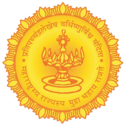Address by Governor at the inauguration of a One Day National Open Forum (Seminar) on ‘New Dimensions in Higher Education’ on the occasion of the 88th Birthday of Lion Dr Gopalrao Patil, Ex- MP at Rajarshi Shahu Junior Science College, Latur
Address by Shri CH. Vidyasagar Rao, Governor of Maharashtra at the inauguration of a One Day National Open Forum (Seminar) on ‘New Dimensions in Higher Education’ on the occasion of the 88th Birthday of Lion Dr Gopalrao Patil, Ex- MP at Rajarshi Shahu Junior Science College, Latur at 1030 hrs on Tuesday, 16th October 2018
Shri Sambhajirao Patil Nilangekar, Minister of Skill Development, Shri Shivraj Patil Chakurkar, former Union Home Minister, Dr Sunil Gaikwad, Member of Parliament, Shri Amit Deshmukh, Member of State Legislature, Dr Dileep Mhaisekar, Vice Chancellor, Maharashtra University of Health Sciences, Vice Chancellors of other universities, today’s Satkar Moorti, former Member of Parliament and President of Shiv Chhatrapati Shikshan Sanstha Dr Gopalrao Patil, Principal Aniruddha Jadhav, people’s representatives, members of faculty, Members of the Organizing Committee, Members of Lions Club, dear students, ladies and gentlemen,
आज लातूर येथे येऊन आणि आपणा सर्वांना भेटून अतिशय आनंद वाटला.
डॉ. पाटील एक सच्चे लोकसेवक असून राज्याच्या विकासात त्यांचे योगदान फार मोठे आहे.
शिक्षण, आरोग्य, सामाजिक सेवा या क्षेत्रांमध्ये त्यांनी मोलाचे कार्य केले आहे.
लातूर जिल्ह्याने शिक्षण क्षेत्रात नवी क्रांती केली आहे. ‘लातूर पटर्न’ सारखे यशस्वी प्रयोग राबविले आहेत. या कार्यात त्यांचे योगदान मोठे राहिले आहे.
डॉ. गोपाळराव पाटील यांच्या अठठ्यांशीव्या वाढदिवसानिमित मी त्यांचे अभिष्टचिंतन करतो आणि त्यांना दीर्घ आयुष्य आणि उत्तम आरोग्यासाठी शुभेच्छा देतो.
Ladies and gentlemen,
At the outset, I congratulate the Lions Family, Latur, Swami Ramanand Teerth Marathwada University, Nanded and the Autonomous Rajarshi Shahu Mahavidyalaya, Latur, for organizing this One Day National Seminar on the theme ‘New Dimensions in Higher Education’.
There could not have been a better way to celebrate the 88th birthday of Dr Gopalrao Patil than organizing this Open Forum on higher education.
The timing of this Seminar could not have been more appropriate. India is on the threshold of emerging as the youngest nation in the world. It is expected that by 2020, the average age of an Indian will be 29 years, which is 8 years younger than the average age of a Chinese or an American.
This is perhaps the most critical moment for all of us. It is imperative for our education system to rise up to the challenge of empowering the youths with quality education and skills. It is necessary that our education system provides a proper ecosystem for our students, researchers and teachers to work and to achieve their goals, dreams and aspirations. It is equally important that our education system produces the best of human resources for the growth of our economy and development.
If our education system fails in this effort, our demographic dividend will turn into a demographic disaster.
Rejuvenating and reforming our higher education system is no longer an option, it has become an imperative.
Friends,
India has had a long history of higher education. Our education system produced scientists and scholars in various disciplines. Some of the oldest institutions of higher learning such as Nalanda, Takshashila and Vikramshila were located in India. There was a time when Indian education system was the most coveted in the world.
Our achievements speak for themselves. India gave the world one of the greatest civilizations. We produced great academic leaders in every stream. History informs us that Indian Mathematician Bhaskaracharya was the first to calculate accurately the time taken for the Earth to orbit the Sun, as 365.2588 days. It is said that Bhaskaracharya meditated at Patnadevi in near Chalisgaon in the Jalgaon district.
Indians gave the world the concept of zero. We gave the world Yoga, we gave the world Ayurveda.
One of the notable scientists of the ancient India was Acharya Kanada who is said to have devised the atomic theory, centuries before John Dalton was born. He speculated the existence of anu or a small particle, much like an atom.
Last week I presented the Sushruta Awards to eminent doctors and surgeons. Sushruta Samhita is considered to be one of the most comprehensive textbooks on ancient surgery. Charaka authored the Charaka Samhita, on the ancient science of Ayurveda. Charaka’s ancient manual on preventive medicine remained a standard work on the subject for two millennia and was translated into many foreign languages.
According to J. T. Sunderland, “Nearly every kind of manufacture or product known to the civilized world, had long, long been produced in India.
India was a far greater industrial and manufacturing nation than any in Europe or than any other in Asia. Her textile goods – the fine products of her looms, in cotton, wool, linen and silk-were famous all over the civilized world.
India had great architecture – equal in beauty to any in the world. Not only was India the greatest ship-building nation, but she had great commerce and trade by land and sea which extended to all known civilized countries. Such was the India which the British found when they came.” (Unquote)
Unfortunately, we suffered long spells of foreign dominations during which India not only lost its economic clout, but lost a great education system.
The higher education system thrust upon us by the British was designed to produce civil servants and clerks to serve at the lower level of administration. The system was not designed to produce thought leaders and scholars. A course correction is needed most urgently.
The nation has changed. A New India has emerged. Our goals have changed. Our priorities have changed. New India cannot afford to have an education system of old India.
We are in the process of doing away with various old legislations enacted by the British, which have become redundant. In the same manner, the higher education system needs to be overhauled.
The beginning will have to be made by rebuilding every single institution of higher learning with focus on quality and excellence. For this to happen we need commitment to excellence from planners, managements, teachers and students.
Commitment from managements is required to fill up vacant teaching positions. Our teacher-qualifying examinations are not producing enough candidates. In absence of qualified teachers, teaching positions are filled on ad-hoc basis. This adhocism is reflecting poorly on our collective performance at the university ranking.
Except for the Savitribai Phule Pune University, the majority of our universities and colleges failed to make a decent grade in the National Institute Ranking Framework announced by the Ministry of Human Resource Development.
I feel sorry to say that most institutions are taking NAAC assessments very casually. Everywhere we are looking for shortcuts ! We want good rankings; but we do not want to fulfill the criteria. Students want good marks; but many of them look for short cuts. I wish to caution that this culture of ‘short cuts’ and ‘adhocism’ will ruin our education system completely.
While our Hon’ble Prime Minister, Shri Narendra Modi is keen to promote ‘Make in India’ mission, and the country hopes to reap a demographic dividend through its young population, the quality of engineering education is constantly on the decline.
According to the All India Council for Technical Education (AICTE), nearly 200 ‘substandard’ engineering colleges have applied for closure. This year, many of our engineering colleges found it hard to get even half the number of students compared to their sanctioned strength. What has happened to engineering education, might as well, happen to other streams. The portents are ominous.
One way to rebuild the institution is to opt for autonomy. During the past few years, many institutions are opting for autonomy, which is certainly a positive development.
Every university and every college must identify a few departments with potential for excellence and develop those into centres of excellence.
Students are seeking international learning experience from educational institutions and therefore we need teachers who are constant learners; and who bring passion and greater commitment to educate, mentor and update the students.
With internationalization of education, we may have to address some of the challenges such as such as Inter disciplinary system thinking, Curriculum enrichment, understanding the impact of culture and value system etc.
There are many private universities, deemed universities and foreign universities competing for attracting our students. Many foreign universities are offering scholarships to our students. Attracting and retaining the brilliant and the best students should also be our priority.
Administration of a college or university is the first point of contact of the student with the institution. Therefore, colleges and universities must streamline their administrative departments and make those student-friendly.
Friends,
As Governor, I attend Convocation Ceremonies of several universities. I found that in 8 out of 10 cases, top prizes and gold medals are won by girl students. However when it comes to securing higher positions in employment in universities and industries, women are distinctly missing. This overall gender imbalance in our institutions of higher learning remains a matter of concern.
A survey conducted by an American think tank covering 22000 publicly-traded companies in over 91 countries, showed that companies employing 30 percent and more female executives earn more profits. So it makes sound economic sense to employ more women, not just in industries but also in institutions of higher learning.
We have to enable and encourage more women to join the institutions of higher learning and research in leadership positions.
Universities and colleges function in the midst of society. They must respond to the problems of society in which they operate. Academic institutions should study the problems of society and become willing partners in addressing these problems. Such engagement of universities and colleges with society will make students sensitive towards the problems of society and the state.
Last week I visited an Ashram Shala built from the funds provided by a well known educational institution. The educational institution spent 4.5 crore and built hostels and dining hall for an Ashram Shala.
I want every college and every university in the State to discharge their Institutional Social Responsibility towards society through such acts of greater public good.
To sum up, I will call upon all universities and colleges to gear up for new challenges.
Do not wait for the education system to change – start the change from yourselves.
Reject the culture of short cuts and invest in teaching, research and overall excellence.
Collaborate with other colleges and universities and even with foreign institutions.
Make education student-centric by streamlining administration.
With these words, I congratulate the organizers for bringing about a meaningful discussion on ‘New Dimensions in Higher Education’ and wish you all fruitful deliberations.
On behalf of all of you, and on my own behalf, I wish Dr Gopalrao Patil ‘Jeevet Sharadah Shatam’ !!
Thank you
Jai Hind ! Jai Maharashtra !!



